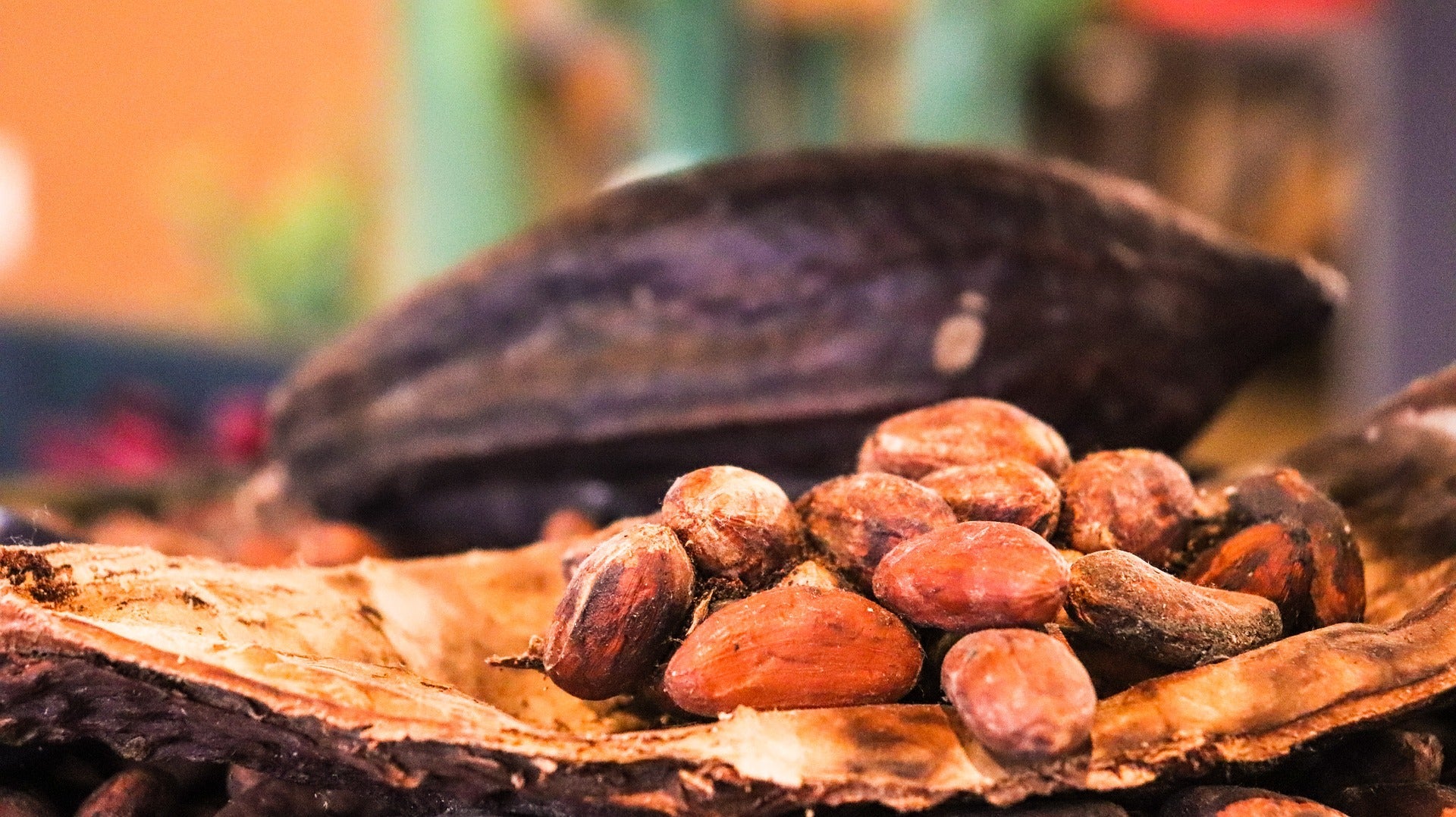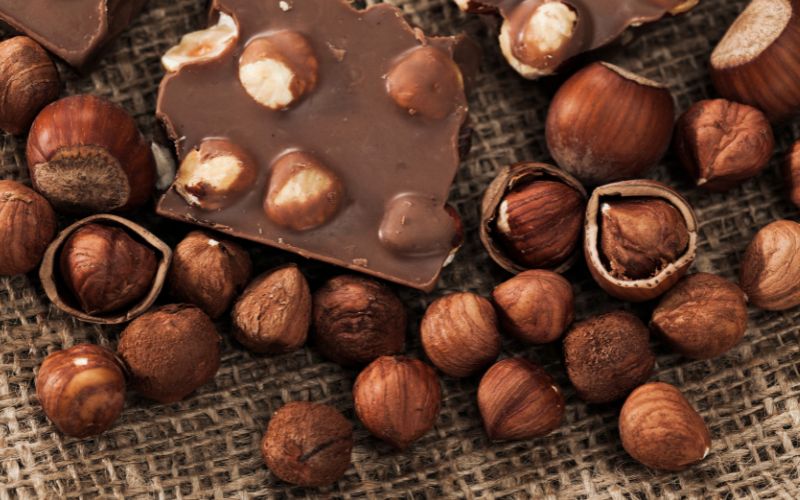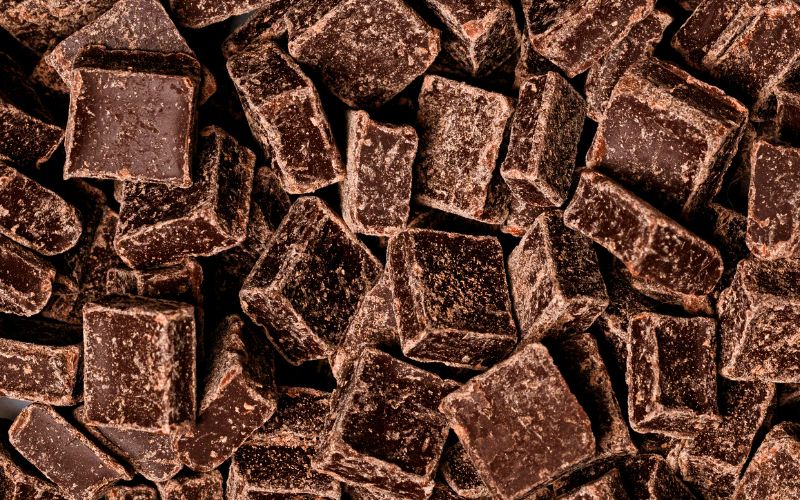Cacao Vs. Cocoa
Often, the terms Cocoa and Cacao are used interchangeably when describing chocolate products, leading to the conflation and mystification of the terms; but Cocoa and Cacao are notably different. The term Cacao originates from the Aztec word cacaua, while the term Cocoa is thought to have come about through a misspelling/ error by english translators and traders. In modern times, chocolate makers have a more refined distinction between the two, where the difference lies in the process by which they are made into chocolate powders and bars, this process affecting the nutritional content of the final product.

- Cacao
After being separated from their pods, Cacao beans are placed in large drums/containers and left to ferment. Once fermented, the beans are dried then minimally roasted. Since the application of high heat in the roasting process changes the molecular structure of cacao, minimally roasting the beans aids in the preservation of cacao’s nutrients. The amount of roasting done to the beans is one of two criterion that separates Cacao from Cocoa. After roasting, the dried and roasted beans are crushed into raw cacao nibs and ground into a liquor. This liquor is left to cool, and once cooled is ground into Full-Spectrum Cacao Powder.

- Cocoa
Cacao and Cocoa are differentiated by two junctions in the chocolate making process; the roasting of the raw nibs, and when the cacao liquor is pressed to extract the natural fats (cacao butter).
For cocoa powder, the beans are roasted at higher temperatures, as the higher temperatures -by way of changing the chocolate's molecular structure- bring to fruition the chocolatey and sweet taste we find so familiar.
Although this step of roasting is integral, the true difference between cacao and cocoa comes after the nibs are ground into a liquor. Once ground, the liquor is put into a large hydraulic press machine. When activated, the machine presses out all natural fats present in the cacao, transforming the liquor from cacao into cocoa (cacao contains around 40-50% natural fat). Left is a thin pancake-like substance (the cocoa) and liquid-form cocoa butter (the natural fat). As the cocoa butter hardens, the pancake-like cocoa is left to cool and then ground into cocoa powder.

Health Benefits
- Cacao
While “fats” are often demonized, the natural occurring fats in cacao retain many of the antioxidants responsible for guarding against toxins, protecting against certain cancers, and reducing the risk of cardiovascular disease. In conjunction with minimal roasting, refraining from removing these natural fats helps to preserve cacao’s healthy natural nutrients. These natural nutrients and chemicals such as resveratrol produce calming effects in the body. Since Cacao belongs to the methylxanthine chemical family, and methylxanthine chemicals cross the blood-brain barrier allowing them to attach to the central nervous system, ingesting cacao leads to a calming and soothing effect. The chemicals bond to the central nervous system, producing the calming effect, while simultaneously helping to protect the central nervous system.

- Cocoa
Chocolate is often pigeonholed as a dessert; delicious but unhealthy. This designation is due to the copious amount of sugar, artificial ingredients, artificial flavorings, oddly named refined oils, and artificial sweeteners that are added to chocolate. When not using these additives, both cocoa and cacao products are healthy foods. Although the fat in cocoa has been pressed out, the fat only makes up 40 -50% of cacao. Consequently, the other 50% still remains in cocoa. As a result, cocoa remains a healthy option for consumption. By using a cold pressing technique, and refraining from adding unnecessary and unnatural ingredients, we preserve many of cacao’s necessary nutrients in ChocoVivo’s bulk cacao powder. Since our beans are still minimally roasted, our bulk powder is still considered a cacao powder, although the fat has been pressed out. Without as much fat, the powder is easier to mix and use for baking.

Why Full Spectrum?
We use the term “Full Spectrum” to help convey the richness of our cacao powder. When purchasing CBD products, full spectrum refers to a product that, in production, was not stripped of any natural nutrients or elements. By using the term “Full Spectrum” in reference to our Full-Spectrum Cacao Powder, we call attention to the natural and full state of our chocolate. By only using natural techniques and not stripping the chocolate of its natural fats, we are left with a true full spectrum cacao powder; rich with resveratrol, antioxidants, theobromine, protein, and vitamins.




